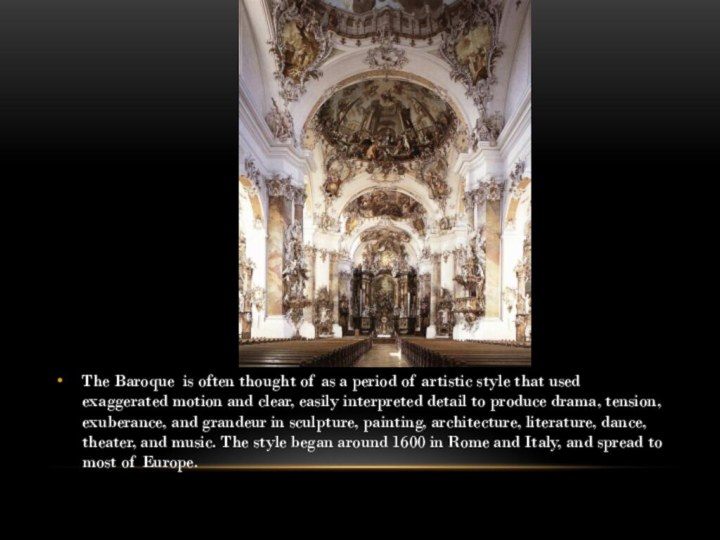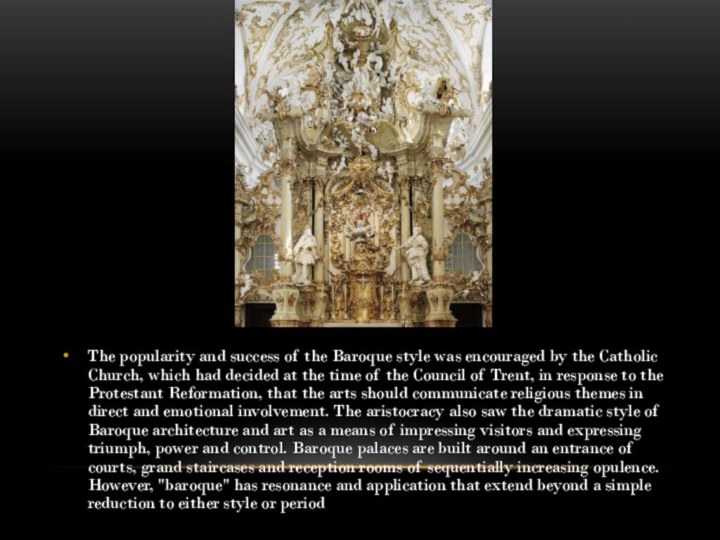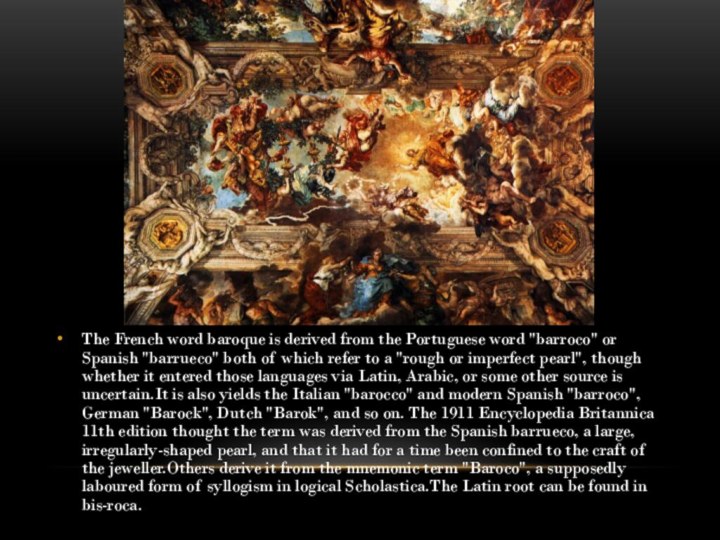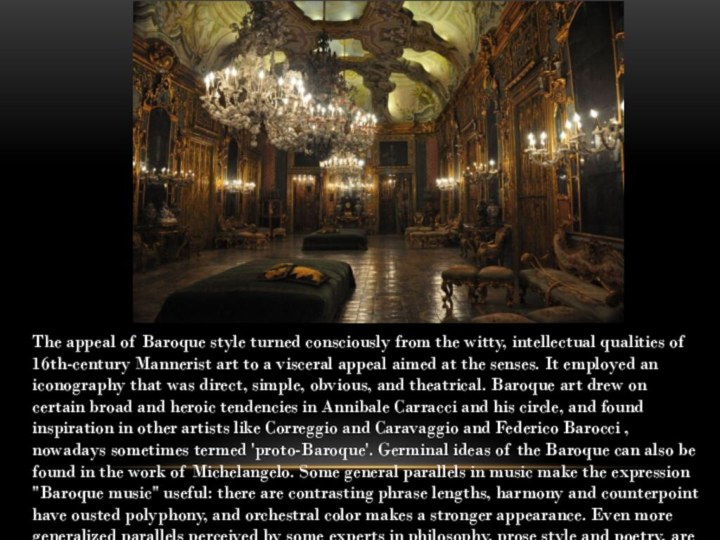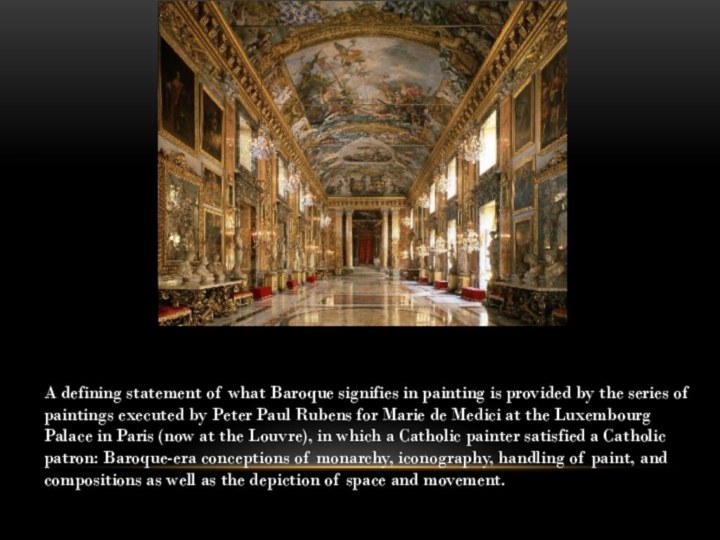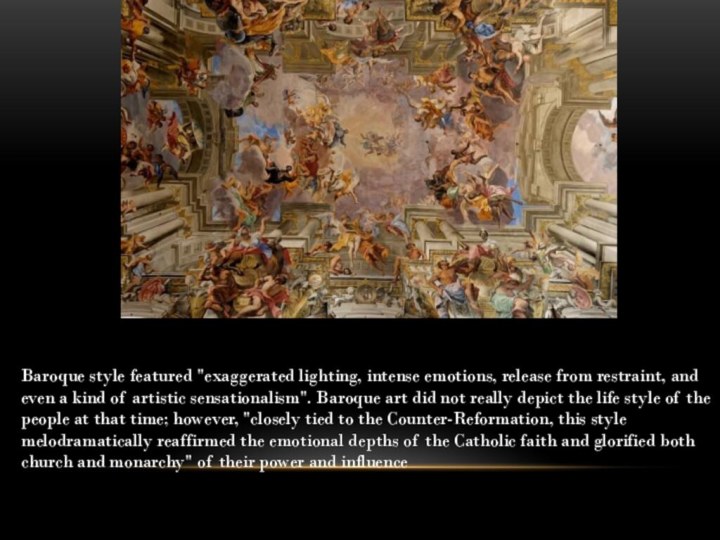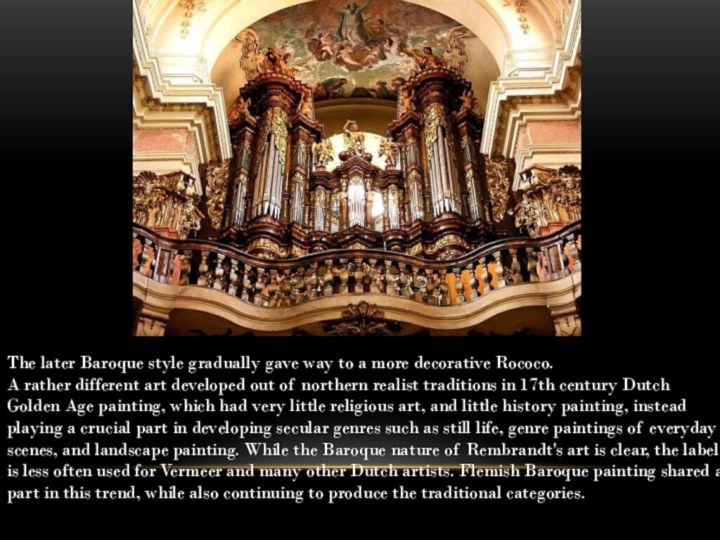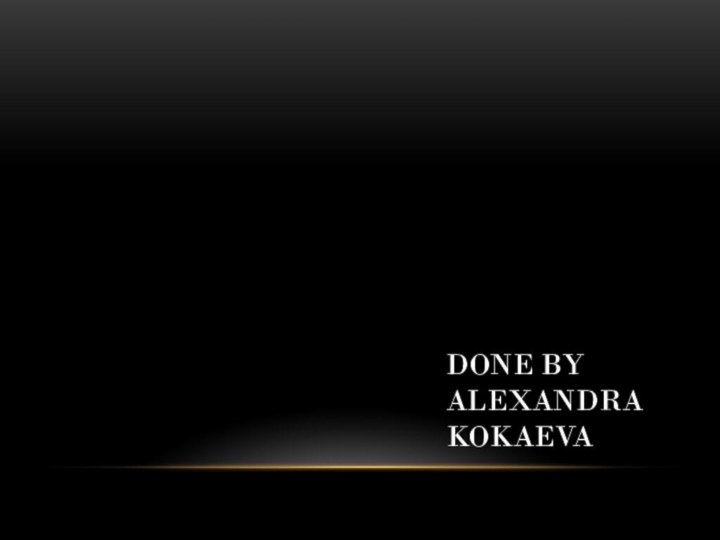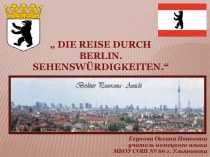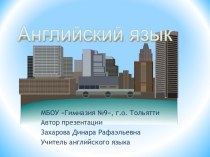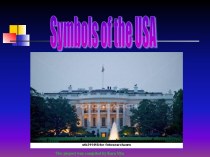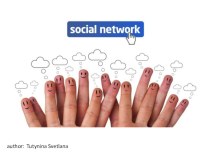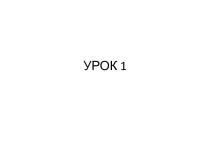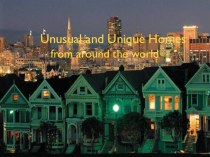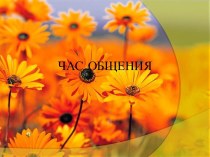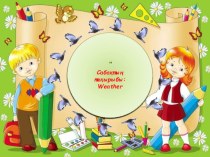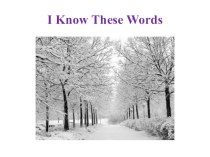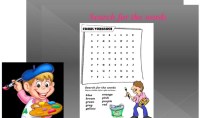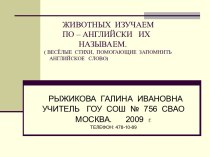Слайд 2
The Baroque is often thought of as a
period of artistic style that used exaggerated motion and
clear, easily interpreted detail to produce drama, tension, exuberance, and grandeur in sculpture, painting, architecture, literature, dance, theater, and music. The style began around 1600 in Rome and Italy, and spread to most of Europe.
Слайд 3
The popularity and success of the Baroque style
was encouraged by the Catholic Church, which had decided
at the time of the Council of Trent, in response to the Protestant Reformation, that the arts should communicate religious themes in direct and emotional involvement. The aristocracy also saw the dramatic style of Baroque architecture and art as a means of impressing visitors and expressing triumph, power and control. Baroque palaces are built around an entrance of courts, grand staircases and reception rooms of sequentially increasing opulence. However, "baroque" has resonance and application that extend beyond a simple reduction to either style or period
Слайд 4
The French word baroque is derived from the
Portuguese word "barroco" or Spanish "barrueco" both of which
refer to a "rough or imperfect pearl", though whether it entered those languages via Latin, Arabic, or some other source is uncertain.It is also yields the Italian "barocco" and modern Spanish "barroco", German "Barock", Dutch "Barok", and so on. The 1911 Encyclopedia Britannica 11th edition thought the term was derived from the Spanish barrueco, a large, irregularly-shaped pearl, and that it had for a time been confined to the craft of the jeweller.Others derive it from the mnemonic term "Baroco", a supposedly laboured form of syllogism in logical Scholastica.The Latin root can be found in bis-roca.
Слайд 5
The word "Baroque", like most periodic or stylistic
designations, was invented by later critics rather than practitioners
of the arts in the 17th and early 18th centuries. It is a French transliteration of the Portuguese phrase "pérola barroca", which means "irregular pearl", and natural pearls that deviate from the usual, regular forms so they do not have an axis of rotation are known as "baroque pearls".
Слайд 6
The Baroque originated around 1600, several decades after
the Council of Trent (1545–63), by which the Roman
Catholic Church answered many questions of internal reform, addressed the representational arts by demanding that paintings and sculptures in church contexts should speak to the illiterate rather than to the well-informed. This turn toward a populist conception of the function of ecclesiastical art is seen by many art historians as driving the innovations of Caravaggio and brothers Agostino and Annibale Carracci, all of whom were working (and competing for commissions) in Rome around 1600.
Слайд 7
The appeal of Baroque style turned consciously from
the witty, intellectual qualities of 16th-century Mannerist art to
a visceral appeal aimed at the senses. It employed an iconography that was direct, simple, obvious, and theatrical. Baroque art drew on certain broad and heroic tendencies in Annibale Carracci and his circle, and found inspiration in other artists like Correggio and Caravaggio and Federico Barocci , nowadays sometimes termed 'proto-Baroque'. Germinal ideas of the Baroque can also be found in the work of Michelangelo. Some general parallels in music make the expression "Baroque music" useful: there are contrasting phrase lengths, harmony and counterpoint have ousted polyphony, and orchestral color makes a stronger appearance. Even more generalized parallels perceived by some experts in philosophy, prose style and poetry, are harder to pinpoint.
Слайд 8
A defining statement of what Baroque signifies in
painting is provided by the series of paintings executed
by Peter Paul Rubens for Marie de Medici at the Luxembourg Palace in Paris (now at the Louvre), in which a Catholic painter satisfied a Catholic patron: Baroque-era conceptions of monarchy, iconography, handling of paint, and compositions as well as the depiction of space and movement.
Слайд 9
Baroque style featured "exaggerated lighting, intense emotions, release
from restraint, and even a kind of artistic sensationalism".
Baroque art did not really depict the life style of the people at that time; however, "closely tied to the Counter-Reformation, this style melodramatically reaffirmed the emotional depths of the Catholic faith and glorified both church and monarchy" of their power and influence
Слайд 10
The later Baroque style gradually gave way to
a more decorative Rococo.
A rather different art developed out
of northern realist traditions in 17th century Dutch Golden Age painting, which had very little religious art, and little history painting, instead playing a crucial part in developing secular genres such as still life, genre paintings of everyday scenes, and landscape painting. While the Baroque nature of Rembrandt's art is clear, the label is less often used for Vermeer and many other Dutch artists. Flemish Baroque painting shared a part in this trend, while also continuing to produce the traditional categories.

